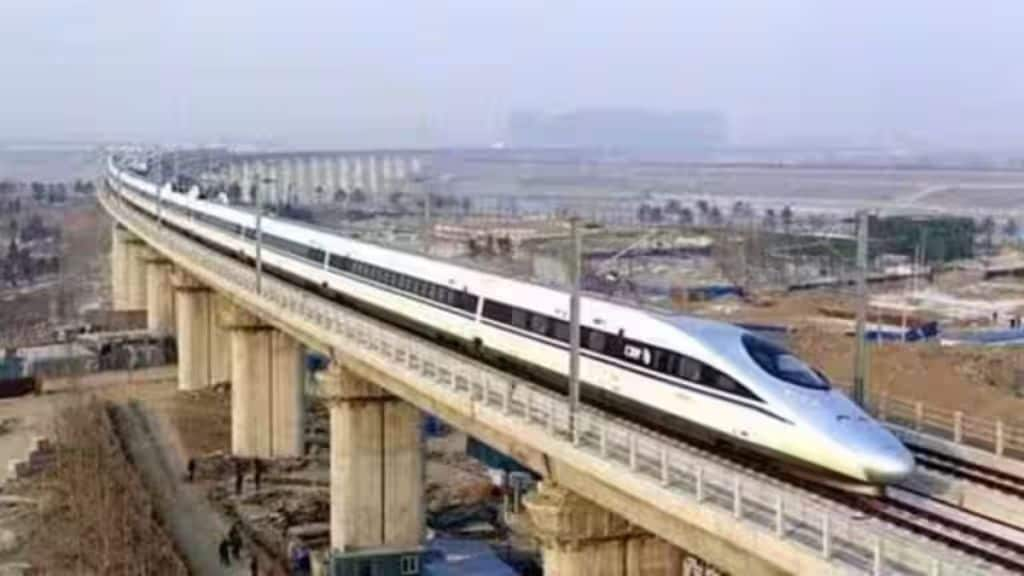Progress on the Mumbai-Ahmedabad bullet train corridor, initiated in November 2021, has seen significant headway, with Union Railways Minister Ashwini Vaishnaw visiting the project site on Friday (February 23) to inspect an under-construction tunnel.
Vaishnaw, who has been consistently overseeing India’s inaugural high-speed corridor project, provided insights into the ambitious venture during his interaction with the media. He specifically highlighted an underwater rail tunnel spanning 21 km, with 7 km submerged beneath the sea, reaching a depth of 56 meters. The tunnel, nearly 40 feet wide, is designed to accommodate trains running at speeds of up to 320 km/hr.
“This tunnel is 21km long, out of which 7km will be undersea. The deepest point is 56mtr underwater. The tunnel is nearly 40 feet wide. The train will be able to move at a speed of 320km/hr inside the tunnel,” he informed
Bullet train project slowed down under Thackeray govt
During the visit, Vaishnaw also criticised the former Maharashtra government led by Uddhav Thackeray, alleging that the necessary permissions for the mega project were not granted during their tenure.
“Till the time the Maharashtra government was led by Uddhav Thackeray, he did not give permission for this project. But when Eknath Shinde assumed charge, we got a go-ahead,” said Vaishnaw on Friday.
“To speed up the process, some innovations have been made. Work is going on simultaneously from four directions… This is India’s first high-speed corridor project… Our biggest aim in this project is to understand the complexity and the capability of its design,” he added.
First section of bullet train corridor to open in mid 2026
Addressing the timeline for operationalising the high-speed rail network, Vaishnaw stated that the first section, connecting Surat and Bilimora, is expected to open in July-August 2026. He emphasised the implementation of the Shinkansen system, one of the world’s safest, in the high-speed railway project.
On Monday, the National High-Speed Rail Corporation Limited (NHSRCL), tasked with overseeing the project, shared an aerial video of the tunnel. The tunnel, connecting Maharashtra and Gujarat, underscores engineering ingenuity and symbolises progress on the route to regional connectivity and development.
The Mumbai-Ahmedabad bullet train corridor stands as a pioneering endeavor, representing a leap forward in India’s transportation infrastructure and promising enhanced connectivity between states.


